Siphon for connecting a washing machine: operating principle, types and installation rules
Washing machines have long been indispensable household appliances for most people. But so that they can perform their functions, moreover, without fail and in full, it is necessary to ensure the possibility of discharge of contaminated water.
The easiest way to do this is with the standard hose provided. However, it is more practical to use a siphon for a washing machine, which will provide a number of important advantages. We will talk about how to choose and install an important and convenient sewer device.
The content of the article:
Why do we need a siphon?
The process of draining contaminated water after washing should be organized correctly. For this, an important device called a siphon is used, which is capable of uninterruptedly providing the discharge of any desired amount of liquid.
Moreover, simultaneously with such an operation, a number of important tasks are performed, including:
- Prevention of odors, gases from the sewer inside the premises. This is achieved by using a water seal, which is a water plug completely covering the desired pipe section along the entire diameter. Moreover, this structural element performs its functions even when the washing machine is not used for a long time.
- The exception is the formation of plugs in the drainage system, and if this still happened, the siphon design will provide an easy and quick cleaning procedure.
In addition, many siphons are capable of filtering large particles of debris. This further helps to prevent the possibility of clogging of sewers requiring flushing system. Another such decision can save valuable items forgotten in the pockets of any washable items.

An important function is the reduction of the load on washing machine pump, which extends its resource, and significantly. Is it mandatory to use it?
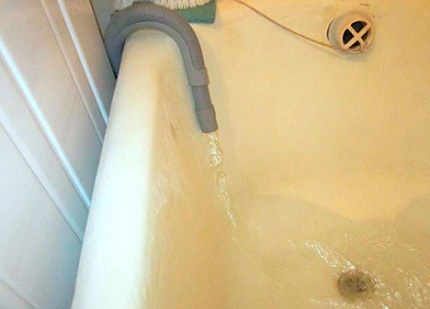
Modern washing machines are equipped with drain hoses, which may well replace the siphon. The advantage of this method of water drainage is the ease of installation and operation.
Since all you need to do to prepare for the draining procedure is to bring the hose to the bathroom, sink, toilet bowl. Such a device is fastened with the help of an element of curved shape - a holder attached to the hose.
If the specified method has only one plus, then there are more drawbacks and they are more significant. So, if the hose is not connected to the sewer pipe, then for water seal formation the hose will have to be bent into an S or U shape.
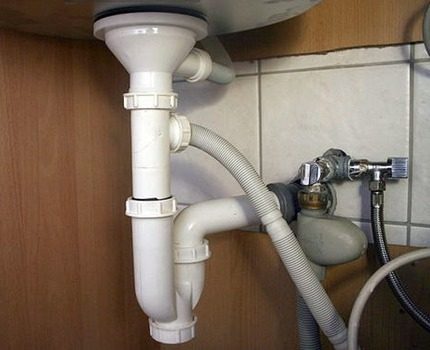
As a result, a thin-walled corrugated product will be constantly under load. Which often leads to a violation of its tightness and related problems. And abandoning the water lock, the owner of the washing machine risks saturating his home sewer scents.
Often the distance from the washing machine to the discharge of the sewer pipe is impressive, and it is not possible to lay the drain hose correctly, that is, with a slope. As a result, the load on the pump increases significantly, which will lead to its premature failure.
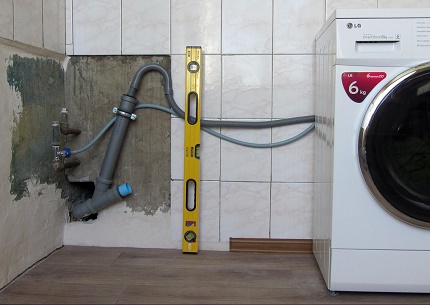
In addition, with a lack of length of the existing hose, it is increased with the help of an additional piece of the same product and a coupling. Which also leads to an increase in resistance, which means an increase in the load on the pump.
Additional joints for all parts of the drain hose are not reliable and durable. As a result, leakage may begin at any time.
Although drain hoses are inexpensive and easy to replace, fear of harming yourself or your neighbors should deter washing machine owners from constantly using the hose, especially the wrong one, instead of the siphon.
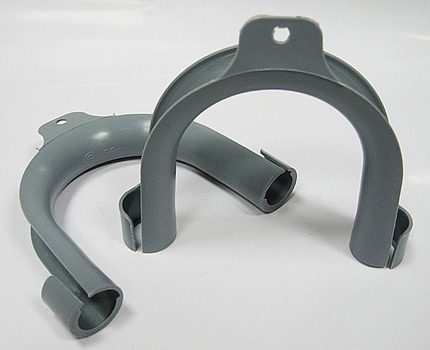
Due to these significant drawbacks, using a drain hose may only be a temporary solution. And it will turn out correctly to organize the drain by connecting the washing machine to the nearest sewer pipe. If it is far, then it should be lengthened.
To connect the hose to the pipe, you should buy a rubber cuff, which eliminates the difference in the diameters of these products. In addition, it is possible to achieve the desired tightness of the connection. In this case, you must comply with the instructions attached to the washing machine.

All of the above indicates that without a siphon intended for connecting a washing machine, you can do it, but it will not be the most practical and best solution.
Device selection guidelines
It is difficult to choose drain valves only because of the low awareness of potential buyers with this kind of equipment. But to fix this is not difficult, since there are only a few of its types, which greatly simplifies the task.
With typical types of siphons used when connecting the washers, familiarize the video:
These include the following siphons:
- outdoor;
- domestic;
- combined.
Since each of the species has its own advantages and disadvantages, an interested person should familiarize themselves with them in more detail. This will help save time, money when buying.
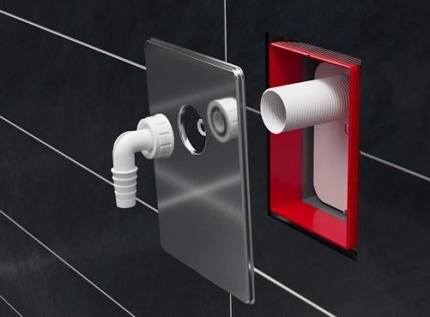
Inexpensive and extremely unpretentious
Typically, external siphons are used if the washing machine and the nearest sewer pipe are separated by a fairly large distance. This makes it possible to carry out installation in a convenient place and use structurally simple products for this purpose, not differing in compactness and other technical refinements.
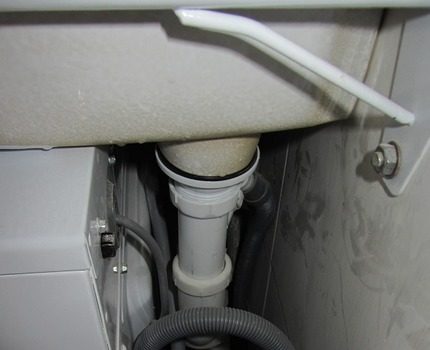
The disadvantages include the fact that external siphons do not make it possible to install existing washing machines close to the walls you need. Therefore, in some cases, insufficient compactness can also be considered a minus.
Convenient and expensive models
A feature of all internal siphons is their small dimensions and the fact that they are mounted inside the wall, for which special notches are made. The above allows you to install washing machines right next to any wall of the room.
In addition, internal siphons are characterized by high aesthetic qualities. Their body is recessed into a pre-made cavity, and the outer part is closed with a decorative panel, which can be metal or plastic. Therefore, only the compact fitting bent at 90 ° C can be seen from the entire structure.
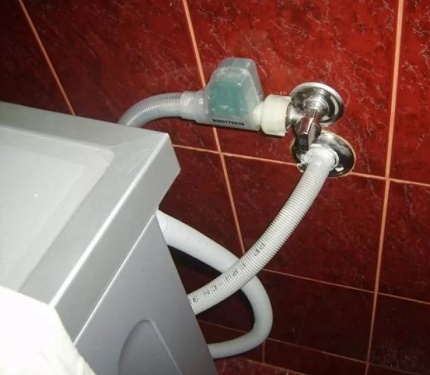
The disadvantages of internal siphons are the relatively complex installation and its considerable cost in comparison with other types. In addition, they are much more difficult to dismantle, which causes some inconvenience if necessary to perform cleaning.
Universal combined option
Visually aligned siphons do not differ from ordinary ones except for just one point. This is the presence in the design of several fittings, designed to simultaneously connect drain hoses belonging to various objects.
Such a product is versatile, therefore, it is used for the simultaneous removal of contaminated water from washing machines, sinks, kitchen sinks, dishwashers.
How to install a combined siphon is described in the following video, and it also indicates the advantages and disadvantages of this method of connecting to the sewer:
Size and shape differences
For convenience in use, all modern drain valves differ in shape and size. This is done to ensure the necessary performance, efficiency, prevent clogging, ease of installation, giving sufficient aesthetic qualities, and solving other issues.
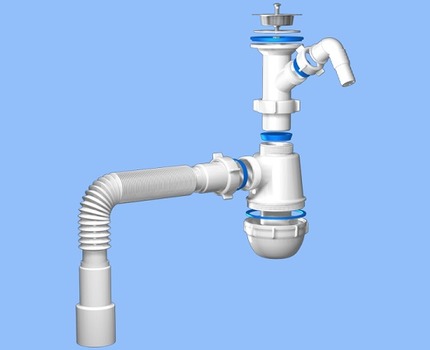
Therefore, if a potential buyer needs to save space when installing the washing machine, then you should pay attention to flat siphons. They have the most compact dimensions.
As a result, it is easy to place the purchased washing machine under the existing washbasin. Which is an effective solution, especially in small bathrooms. This type of installation can be an interesting design decision if a person chooses a combined household appliance and sink.

Check Valve Accessories
Although modern siphons successfully resist clogging, traffic jams, but anything happens. Therefore, the buyer should take care of an additional degree of protection.
For these purposes, a siphon for the purchased washing machine with integrated check valve is used. It is designed to address a number of important tasks to ensure safe use.
Which include:
- Prevention of the return of contaminated water during the formation of plugs in sewer pipes.
- Elimination of unauthorized discharge of water during the washing process.
Especially important is the presence of this valve for residents of lower floors of houses. Since they are most affected by blockages in sewer systems.
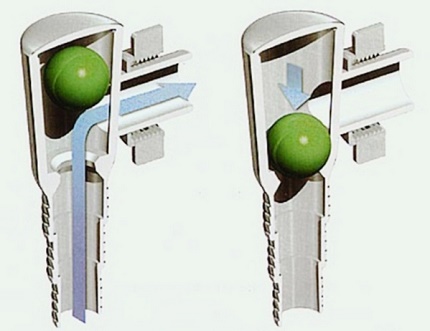
At the same time, a potential buyer of this type of siphon needs to pay attention to the fact that many washing machines come with already equipped check valves. Therefore, in order to avoid unnecessary expenses, this issue must be clarified in advance.
Preparing to purchase fittings
To organize an effective washing process, any type of siphon can be used. The main thing to consider is ease of installation, use and aesthetic qualities. If the washing machine is located far from the siphon, and the question of saving space is not worth it, then you can buy any kind of it.
It is ideal when the drain fittings are covered from view by anything - a bathtub, sink, door, furniture, any other item. If the forms of the siphon “cut the eye”, do not add aesthetics to the room, besides there is no way to hide it, then you need to purchase a built-in product.
This solution will allow you to put the washing machine close to any wall the owner needs, and hide the drain valves. This option will significantly improve the appearance of the room.
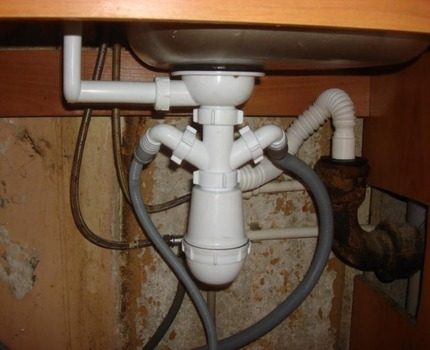
When are you planning to install under water lily sinkthen it will be correct to get a flat siphon. It takes up a minimum amount of space, so it will easily allow you to fulfill your plan.
If a potential buyer plans to discharge contaminated water simultaneously with 2-3 types of equipment, then the best solution would be to buy a combined siphon with the right number of fittings for connecting the drain hoses.
If there is no check valve in the design of the washing machine, you should not save money on its purchase. The owner will not receive regular benefits from him, but in a critical situation this product will save you from significant troubles and losses.
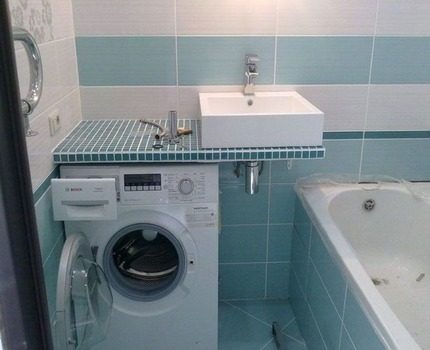
No need to save on the quality of the siphon itself, its components. Since their service life is always relatively short, and budget options keep working even for a shorter period of time.
Installing the purchased product
When installing the siphon yourself, you should always consider a number of mandatory rules.Otherwise, it will not be possible to organize an effective discharge of contaminated water, and this will also affect the performance of the washing machine.
Mandatory installation rules include the following:
- the siphon cannot be installed higher than 80 cm from the level at which the washing machine is located - non-compliance entails a large load on the pumping device, which leads to its rapid wear;
- do not lengthen the drain hose, this solution will again lead to a significant increase in the load on the pump of the washing machine.
If you nevertheless had to perform an extension, then this should be considered as a temporary solution. The drain hose does not need to be thrown to the floor, as the pump will have to exert even more extra effort to perform its functions.
Therefore, the best way to solve the problem with the length is to connect the sewer pipe to the required distance.
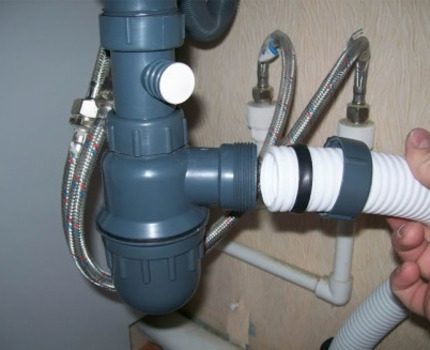
If this is not possible, then the hose should be laid along the wall with the necessary slope in order to ensure gravity of the water. In this case, to the pump and washing machine motor permissible loads will act, which means that the service life will not be reduced.
If you want to install the purchased siphon on your own, then you need to understand that this will be a simple operation only if the sewer pipes, sinks, washing machine, etc. are installed and failed. And the necessary preparatory work was performed, for example, a recess in the wall was made for the built-in siphon.
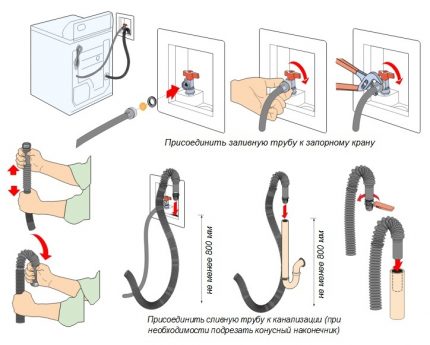
Additionally, you need to consider a number of features. For example, if the mentioned internal siphon is installed, and tiles are used to decorate the walls of the bathroom, then the lining is first performed. And only then is a place selected for drain valves. Since work in the indicated sequence will allow to obtain higher aesthetic qualities.
If any of the listed conditions is not met, then the installation without fail will require substantial knowledge and a special tool. Which makes the possibilities of an unprepared person limited.
Often mistakes are made that lead to financial losses. This indicates the need to use the services of masters for complex work on wiring communications and other things.
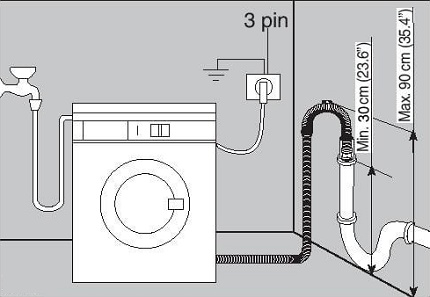
Nevertheless, the usual replacement of the siphon or just the installation is quite simple to perform. Why do you need to connect the product to the sewer pipe, and then bring the drain hose.
To ensure proper tightness, use new gaskets. And after dismantling the old siphon from the sewer pipe, traces of dirt must be removed from the hose.
After completing the installation procedure, carefully check the tightening of all available clamps, bolts, and the rest of the fasteners. Next, it is necessary to discharge contaminated water in test mode.
Why put toilet paper under the siphon - such a simple solution will reveal even minimal leakage, which is not always possible to do visually. Therefore, verification should only be carried out using the specified control method.
If a combined type of drain valve is used, then it is worthwhile to make a simultaneous drain from all the equipment used.This allows you to check the tightness and performance at maximum load.

If the test does not detect leaking siphon to drain contaminated liquid from the washing machine, then the owner can proceed to its normal use. And without any restrictions.
Conclusions and useful video on the topic
You can get acquainted with all existing types of siphons by watching the following video material:
To choose the best option for the siphon, which makes it possible to continuously drain contaminated water from washing machines for a long time, it is enough to have a small supply of knowledge.
Since only a few types of drain valves are produced and used by the owners of washing machines, which is quite enough to satisfy all needs. And also you should never forget that the siphon must be installed correctly.
Tell us about how you selected and installed a siphon with a pipe for draining dirty water from the washing machine. Share valuable information on the topic of the article. Please leave comments in the block form below, post a photo and ask questions about your points of interest.

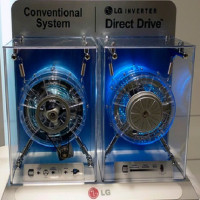 How the engine of the washing machine works: the principle of operation + how to replace in case of breakdown
How the engine of the washing machine works: the principle of operation + how to replace in case of breakdown  Pump for a washing machine: how to choose + how to replace
Pump for a washing machine: how to choose + how to replace  LG Washing Machine Errors: Popular Trouble Codes and Repair Instructions
LG Washing Machine Errors: Popular Trouble Codes and Repair Instructions 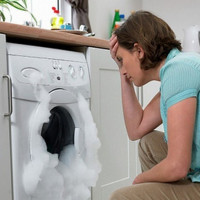 How to properly drain your washing machine: a step-by-step guide and valuable tips
How to properly drain your washing machine: a step-by-step guide and valuable tips 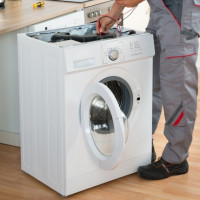 Samsung washing machine errors: how to understand the malfunction and repair
Samsung washing machine errors: how to understand the malfunction and repair 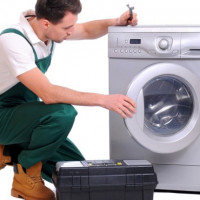 Installing the washing machine: step-by-step installation instructions + professional tips
Installing the washing machine: step-by-step installation instructions + professional tips  How much does it cost to connect gas to a private house: the price of organizing gas supply
How much does it cost to connect gas to a private house: the price of organizing gas supply  The best washing machines with dryer: model rating and customer tips
The best washing machines with dryer: model rating and customer tips  What is the color temperature of light and the nuances of choosing the temperature of the lamps to suit your needs
What is the color temperature of light and the nuances of choosing the temperature of the lamps to suit your needs  Replacement of a geyser in an apartment: replacement paperwork + basic norms and requirements
Replacement of a geyser in an apartment: replacement paperwork + basic norms and requirements
The purchase of the first automatic washing machine took place around 2000m. The manager in the store assured me: it’s great that you don’t need to bother with water drainage from the washer, you need to use a hose to outweigh the side of the bath. When the hose fell to the floor, all the water was on the tile and began to drain into the hallway, I thought about the correctness of this decision. To all the so-called “amenities” it is worth adding: hot fumes of powdery dirty water and constant smudges on the bathroom. The information that there are siphons for connecting the washers turned out to be just a salvation!
A siphon for a washing machine is certainly a very useful thing, but how did you manage to attach the hose to the bathroom so that it fell onto the floor and drained water there? You can even just drop the hose inside the bathroom and it will not jump. Anyway, when the machine erases, you need to look from time to time to make sure everything is in order. By the way, we connected the siphon to the washbasin, but even so, I periodically go to the bathroom to check.